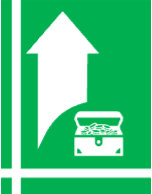Optimizing AdX Performance
This case study demonstrates how a publisher leveraged wrappers to create a unified auction, integrating a dynamic pricing engine and audience segments. By segmenting inventory into private marketplaces (PMPs) and enriching ad requests with first-party data, they forced demand-side platforms (DSPs) to compete more aggressively in real-time. This strategy shifted the paradigm from a traditional waterfall, creating a competitive bidding environment that drove up win rates and ultimately resulted in significantly higher CPMs and substantial year-over-year revenue growth.

Around 2018-2019, a prominent real estate publisher was utilizing Google Ad Exchange (AdX) but failing to monetize its premium inventory—high-value pageviews from users actively researching property investments—to its full potential. Their setup suffered from common inefficiencies of the era: a poorly configured "waterfall" hierarchy in Google Ad Manager (GAM) that favored guaranteed, low-paying line items over higher-yielding programmatic demand. The core issue was a lack of competitive pressure on AdX, which, without rival bidders, had no incentive to increase its bid prices, resulting in stagnant revenue despite strong traffic.

The client needed a data-driven yield strategy to:
1️⃣. Analyze the existing AdX setup and performance.
2️⃣. Improve overall eCPM and fill rate through dynamic optimization.
3️⃣. Segment inventory and apply optimal pricing for different ad placements.
4️⃣. Introduce competition among exchanges to drive higher bids.

Our strategy focused on dynamic allocation and pricing optimization to create competition among demand partners. Key steps included:
Competition-Driven Pricing: Encouraged exchanges to bid higher by pushing value CPMs into GAM with an additional percentage.
Dynamic Allocation: Forced AdX to generate better CPMs while maintaining fill rates through a waterfall model.
Inventory Segmentation: Analysed and categorized inventory to apply custom pricing for high-value placements.
First-Party Data Utilization: Helped the client leverage audience retargeting to command higher CPMs.
Exchange Collaboration: Engaged with exchange representatives to align on performance goals.

1️⃣. Daily CPM Analysis – Created a template to track CPMs from each exchange and adjust pricing dynamically.
2️⃣. Value CPM Push – Increased competition by setting higher floor prices in GAM line items.
3️⃣. Dynamic Allocation & Waterfall Optimization – Balanced high CPMs with fill rate efficiency.
4️⃣. Inventory Pricing Tiers – Applied different pricing for segmented inventory (e.g., premium placements vs. remnant).
5️⃣. First-Party Data Strategy – Enabled audience-based targeting to boost CPMs.
6️⃣. Exchange Performance Reviews – Conducted meetings with exchange reps to refine bidding strategies.








